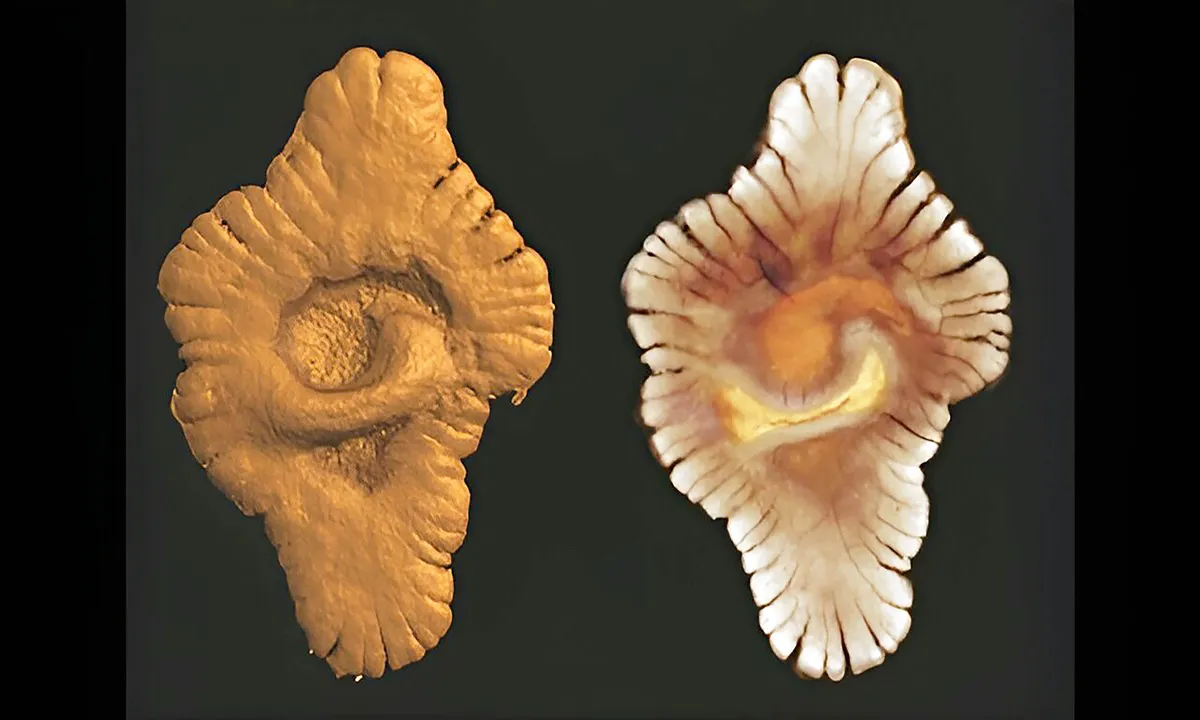
For the majority of Earth's first three billion years, our oceans were teeming with single-celled microbes that moved at a sluggish biochemical pace. While these organisms represented life, they were not complex. A significant factor in this simplicity was the scarcity of phosphorus, a crucial nutrient required for DNA assembly, membrane stability, and ATP energy exchanges. Rivers contributed only trace amounts of phosphorus to the seawater, which limited biological diversity and stifled evolutionary experiments in body size. Evidence of this prolonged nutrient famine is preserved in ancient mudstones, which show a stark lack of phosphate minerals compared to younger geological formations. As a result, biological productivity lagged, oxygen production remained low, and food chains were primarily composed of microscopic organisms.
About 2.1 billion years ago, a significant geological event occurred when the Congo and São Francisco continental blocks collided. This collision caused faults to be compressed, magma to stir, and underwater volcanoes to erupt across a shallow inland sea, now known as the Francevillian sub-basin in Gabon. These volcanic eruptions released phosphorus-rich fluids directly into the water, while simultaneously isolating the basin from the larger ocean. In this nutrient-rich lagoon, cyanobacteria thrived, producing oxygen and sequestering carbon at an unprecedented rate. This chemical bloom dramatically increased local energy budgets, creating an environment that favored larger body sizes and cooperative cell formations rather than solitary bacterial organisms.
Black shales found in the Francevillian basin contain remarkable fossil impressions, including disc-shaped, ribbon-shaped, and leaf-shaped forms that can grow up to six inches long—quite substantial for their epoch. Their distinct shapes and clustering imply biological growth rather than mere mineral formations. These fossils appear in sedimentary layers that coincide with the phosphorus spike, thereby linking anatomical structures with chemical changes. If these fossilized forms indeed represent multicellular life, they could potentially push back the timeline for the emergence of complex organisms by approximately 1.5 billion years. This discovery fundamentally alters our understanding of evolution, suggesting that large organisms were not solely the domain of later epochs, but rather emerged when nutrient availability and oxygen levels aligned favorably.
This groundbreaking research, spearheaded by Cardiff University geobiologist Dr. Ernest Chi Fru, combines detailed rock chemistry with comprehensive fossil mapping. Dr. Chi Fru emphasizes the importance of phosphorus availability, stating, “The availability of phosphorus in the environment is thought to be a key component in the evolution of life on Earth, especially in the transition from simple single-celled organisms to complex organisms like animals and plants.” He further notes that while increases in marine phosphorus and seawater oxygen concentrations have been tied to biological evolution around 635 million years ago, this new study introduces an earlier evolutionary event approximately 2.1 billion years ago.
Outside the Francevillian lagoon, oceans still faced a deficit of phosphorus and oxygen. As a result, larger organisms would have struggled to survive in these harsh conditions. The lagoon's shoreline barrier essentially created a biological bubble; however, when volcanic activity ceased and nutrient flow dwindled, the favorable conditions disappeared, leading to the extinction of these early macro-organisms. This illustrates how evolution experiments can falter when resources are insufficient, highlighting the necessity of both innovation and the freedom to expand within ecosystems—factors the early Proterozoic world could not yet provide.
Researchers identify a “two-step” pathway in the evolution of complex life. The first step, marked by the Francevillian pulse, coincides with the initial rise in atmospheric oxygen. The second step occurred nearly 1.5 billion years later during the Ediacaran period, when another surge in oxygen met a more stable supply of nutrients. This dual evolution lifted complex life beyond isolated instances, setting the stage for the Cambrian explosion and the diverse array of animals that populate Earth today. The evidence suggests that a sufficient supply of phosphorus may be just as critical as oxygen in creating ecosystems filled with active, energy-demanding organisms. Without the interplay of both factors, life tends to remain microscopic.
Why does this research matter? Astrobiologists often search for oxygen in exoplanet atmospheres as it indicates potential photosynthesis. However, the findings from the Francevillian sub-basin suggest that the phosphorus cycle should also be a point of consideration. A planet abundant in oxygen but deficient in phosphorus could remain in a microbial state for eons. In contrast, tectonic activities that introduce phosphate to oceans might catalyze significant evolutionary advances. Thus, phosphorus emerges as more than merely a fertilizer for terrestrial crops; it serves as a potential cosmic throttle on complexity, influencing whether life remains small or aspires to greater biological heights.
The full study was published in the journal Precambrian Research, shedding new light on the intricate relationship between nutrients and the evolution of life on Earth.
Interested in more enlightening articles? Subscribe to our newsletter for exclusive content and the latest updates. Explore our free app, EarthSnap, brought to you by Eric Ralls and Earth.com.